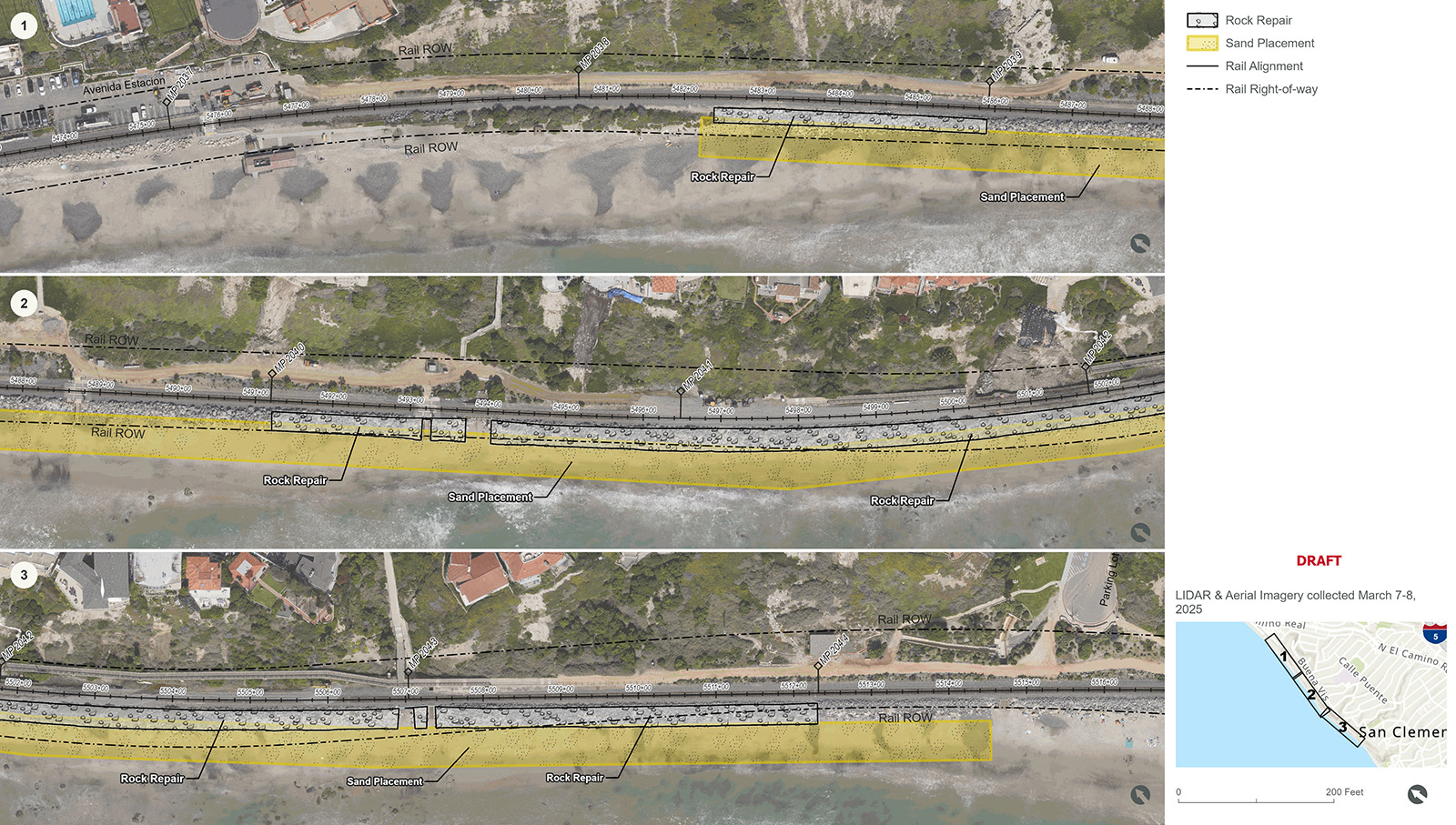Coastal Rail Emergency Projects
Resources


Documents
pdf
pdf
Emergency Coastal Development Permit
pdf
pdf
RGP63 Application
Latest Board Update
December 8, 2025
Update on Emergency Need for Railroad Track Stabilization in the Vicinity of Mile Post 203.80 to 204.40 and 206.00 to 206.70 on the Orange Subdivision


Press Releases
pdf
pdf
September 15, 2025
pdf
